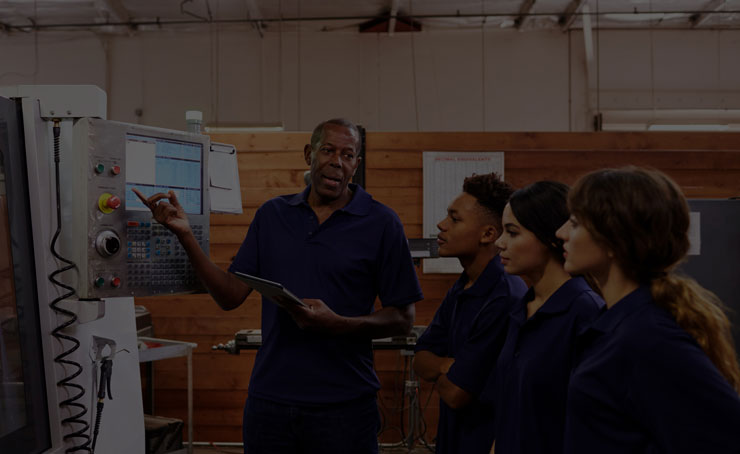Be a Blog Subscriber
Join thousands of manufacturing leaders and professionals who get the Accelerate blog delivered straight to their inbox


Recently we had the opportunity to host a webinar with Milbank Manufacturing, winner of SME’s inaugural Excellence in Manufacturing Training Award. This award recognized Milbank as a manufacturing leader providing outstanding benchmarks for companies seeking to build a workforce strategy. Tami Green, learning and development manager at Milbank, discussed the company’s revamped training program, and I’m excited to share some highlights from this session on the blog today.
In 2014, Missouri-based Milbank Manufacturing realized the culture within its facilities had changed, its production staff no longer felt respected, and turnover was on the rise. After determining that a lack of training consistency was contributing to the problem, Milbank implemented a structured Training Within Industry (TWI) training program. The result? Employees have been able to try out new job roles, be efficiently trained on new tasks, and are incorporated in creating solutions.
“Employees are encouraged to try several areas on the manufacturing floor, and by utilizing our training within industry process, they can test whether their skill set is a good fit for any given role,” said Green. “By using TWI, Milbank prevents silos and ensures we are sharing tribal knowledge.” According to Green, the key to Milbank’s new job instruction model is that existing production staff are required to write training documents related to their jobs, test the training, and teach new employees using a systematic approach. “The experts — who are the operators and leads — work to break down each job step by step,” said Green. “They also identify the one best way and indicate why we do it that way. The ‘why’ can be the most important part of the process.”
Milbank’s trainers start by putting trainees at ease. They find out what trainees’ past work experiences are, explain what will take place in the training process, and demonstrate the process three times. Trainees then go through the process — four times or more — until they are comfortable.
Prior to implementing the new job instruction approach, Milbank’s training method was to place new employees next to existing employees in the company’s three production facilities, where the existing employees would informally pass on their job knowledge. According to Green, the method was not very effective. Turnover was on the rise, and Milbank’s leadership wondered if inconsistent communication and training were contributing to it. Not only were new employees not being trained consistently, they were not even being given the same information.
That changed after Milbank implemented an intense “train-the-trainer” course for people who would be leading teams and training new trainers in production facilities. Prospective trainers take a 10-hour job instruction class then spend 10 hours developing their skills, one on one, with training supervisors and leads. In order to maintain their certification status, trainers are required to spend at least two hours a month working on development. According to Green, many trainers exceed this requirement.
Once employees become proficient in their areas, they can become certified trainers, and work to train new employees on the process. Production staff also receive classroom training to support Milbank’s goals and initiatives as needs are identified. Skill-building classes are supported by the Missouri One Start grant program, which has provided Milbank with more than $200,000 for training since 2017. Each plant location has a dedicated training supervisor, training leads and multiple well-developed trainers.
“This commitment to our employees has ensured that more than a third of Milbank’s workforce has been with the company 10 years or longer,” said Green.
After its first batch of trainers received certification in 2017, Milbank began to train other trainers, including support staff, union officials, managers, supervisors and production facility leads. But it learned over time that not every employee needs to receive training certification. “Rather, it is about maintaining good trainers who are committed to following the standards that are set,” said Green. Currently, 104 employees are qualified trainers, while an additional 65 employees are working toward certification.
According to Green, steadiness and consistency are the keys to creating a successful workforce training program. “I would recommend that anyone starting this sort of project start off with the sustainment in mind, and how you can ensure it,” she explained. “Sustainment, as we know with any new process, can be the most difficult,” she said.
“It’s easy to revert to training the way you used to do it, because it feels like it takes longer to train the new way. However, you will find it takes more time upfront, but less time fixing mistakes and dealing with scrap because employees are getting all the information they need to do their jobs during training sessions. Align with your company’s goals, stay focused on what you’re trying to accomplish, and remember, you cannot solve all the issues that you will experience at one time. You must change the culture for the program to succeed, and we all know that type of change takes time.”
For more information on Milbank’s training program, watch Tooling U-SME’s on-demand Excellence in Manufacturing Training Award Webinar.
Join thousands of manufacturing leaders and professionals who get the Accelerate blog delivered straight to their inbox